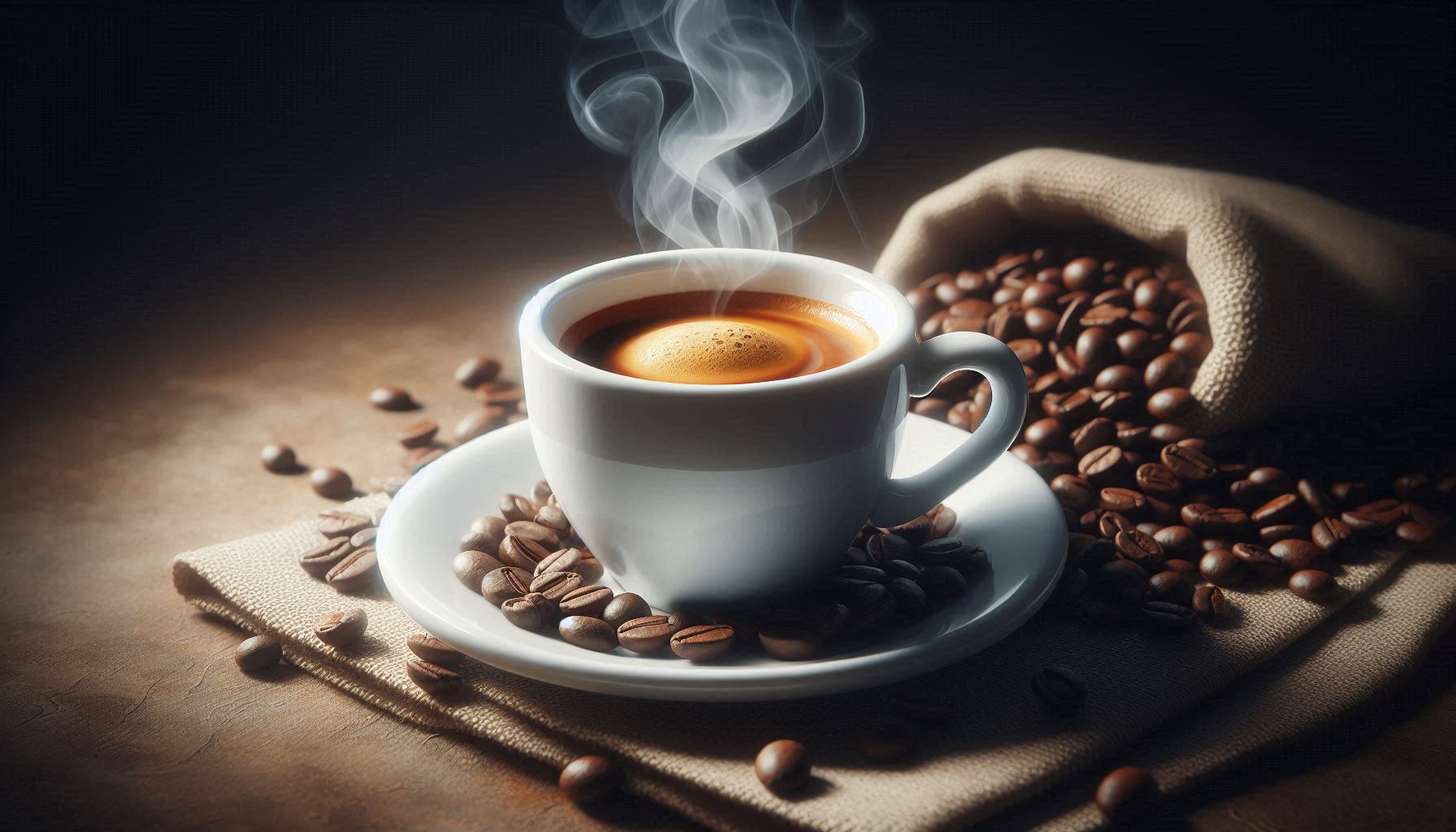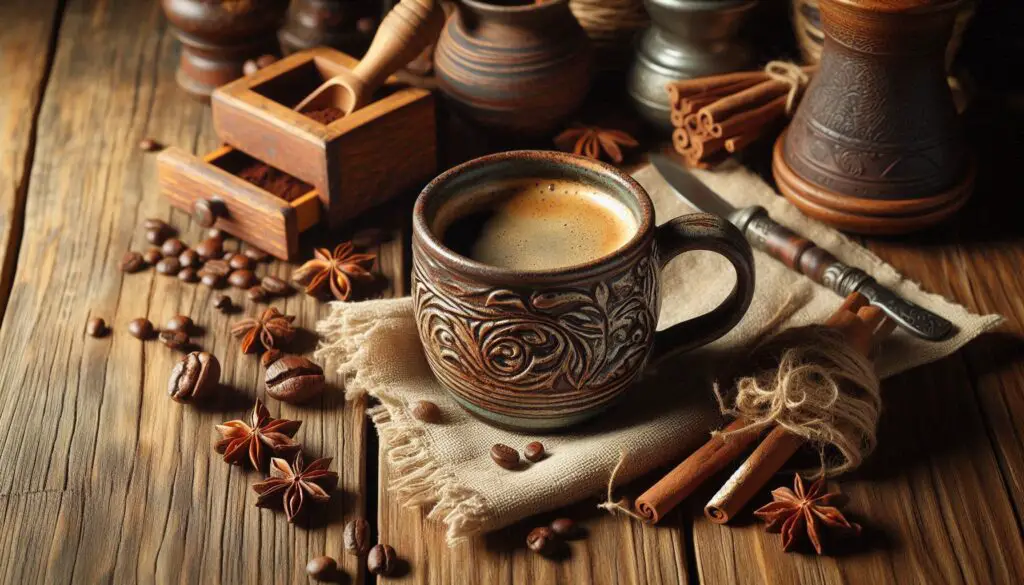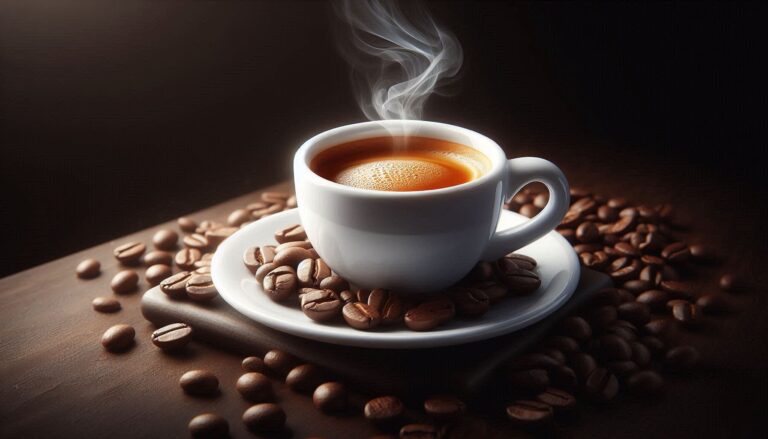Welcoming Coffee Enthusiasts
Welcome, coffee lovers! If you’ve ever wondered how to brew the perfect cup of coffee consistently, you’ve come to the right place. Coffee is more than just a morning ritual; it’s an art form that, when perfected, can elevate your day. This comprehensive guide will explore the secrets behind brewing that flawless cup every time.
Importance of a Perfect Brew
Understanding the art and science behind the perfect cup can transform your daily coffee ritual into a sublime experience. An ideal brew isn’t just about taste; it’s about aroma, texture, and the overall sensory delight that makes coffee one of the world’s favourite beverages. Let’s dive into the elements that contribute to this perfection.

Understanding Coffee Beans
The Journey from Bean to Brew
The path to crafting an immaculate cup of coffee begins with the beans. Coffee beans undergo a meticulous process from cultivation to roasting, each stage influencing the final flavour. Knowing where your beans come from and their processing methods can make all the difference in your brew.
Types of Coffee Beans
Explore the main types of coffee beans: Arabica, Robusta, Liberica, and Excelsa, and how each contributes to flavor and aroma. Arabica beans are celebrated for their rich, smooth flavor profile, often characterized by nuanced acidity and a wide range of complex flavor notes. In contrast, Robusta beans are prized for their bold, intense flavor and higher caffeine content. Beans offer a more pungent, bitter taste with a higher caffeine content. Liberica and Excelsa, though less common, add unique fruity and floral notes to the mix.
Importance of Freshness
Freshness is critical; let’s delve into why freshly roasted beans are crucial for a superior coffee experience. Freshly roasted beans retain their oils and complex flavors, which can degrade over time. Using beans within a month of their roast date ensures you get the most vibrant and aromatic coffee possible.
The Role of Grinding
Grinding Basics
Grinding your coffee beans right can make or break your brew; here’s what you need to know. The grind size affects the extraction rate, determining how much flavor is extracted from the beans. Using a too-fine grind can Sometimes cause coffee brewed in this manner to taste bitter. Too long. If the coffee grind is too coarse, It is essential to be mindful of under-extraction, as it can lead to a weak and unbalanced flavor profile. It’s critical to ensure the grind size is adjusted appropriately to achieve the desired taste and extraction from the coffee beans.
Types of Grinders
From blade grinders to burr grinders, we’ll explore the different types of grinders and their impact on your coffee. Blade grinders are more affordable but often produce uneven ground. Burr grinders are designed to crush coffee beans uniformly, creating a consistent grind size that is essential for achieving brewing excellence. Achieving a consistent grind size is crucial in unlocking the full range of rich flavors and delightful aromas in coffee. This meticulous uniformity in grind size is essential for producing a superior and exceptional coffee cup.
Grind Size and Brew Methods
Learn how grind size affects various brewing methods and why getting it right is essential for flavor extraction. Different coffee brewing techniques call for varying grind sizes. For instance, espresso needs a fine grind to extract the flavors effectively, while a French press requires a coarser grind to prevent the grounds from seeping through the filter. It’s crucial to grasp these distinctions to ensure that each cup of coffee is crafted flawlessly.

Water Quality and Temperature
The Impact of Water Quality
Discover how water quality can influence the taste of your coffee and tips for optimizing it. Water is about 98% of your coffee, so its quality is crucial. Using filtered water free from impurities and chlorine can enhance the purity and taste of your brew.
Ideal Water Temperature
The temperature of your water is crucial; find out why and how to achieve the perfect brewing temperature. For an optimal coffee brewing experience, ensure the water temperature is within the precise range.
The ideal temperature range for complete flavour extraction from Coffee grounds should be 195°F —205°F (90°C to 96°C), Delivering a robust and well-balanced cup of coffee. Water that’s too hot can scorch the beans, while water that is too cool can under-extract, leading to a flat taste.
Brewing Techniques
Espresso
For a superb espresso, grind your coffee and evenly press it into the portafilter. The extraction process should last 25-30 seconds, producing a shot with a luxurious crema and a well-rounded, intense flavor.
Pour Over
To make a great pour-over coffee, use a special kettle for accurate pouring, wet the filter to remove any paper taste, and pour water slowly over medium-coarse grounds. This method helps bring out the delicate flavors and aromas of the coffee.
French Press
Here are the revised instructions:
To make French press coffee, add coarse coffee grounds to the press, pour hot water, and let steep for about four minutes. After that, press the plunger slowly and enjoy your flavorful cup of coffee.
Aeropress
Discover the Aeropress’s versatility and how it can produce a superior brew. The Aeropress allows various brewing techniques, from espresso-like shots to cold brews. Experiment with grind sizes and brew times to find your perfect cup.
Cold Brew
Cold brew offers a smooth and refreshing coffee experience; we’ll show you the steps to make it at home. Combine coarsely ground coffee with cold water and let steep for 12-24 hours. Strain the concentrate and serve over ice for a mellow, low-acid coffee.
Enhancing Your Coffee Experience
Spice up your coffee by adding flavors like cinnamon or nutmeg.
Experiment with different tastes by trying flavored syrups or adding a splash of liqueur.
Milk Frothing Techniques
Learn the art of frothing milk for lattes, cappuccinos, and other milk-based coffee drinks. Use a steam wand or handheld frother to create velvety microfoam or dense foam, depending on your preference. Perfecting your milk frothing skills adds a professional touch to your home-brewed beverages.
Coffee Pairings
Explore ideal food combinations to enhance your coffee and elevate your taste buds. Match a tangy, zesty coffee with fruity pastries, or savor a velvety, rich brew with dark chocolate or nutty snacks. The perfect pairing can enrich the flavors of both the coffee and the food.

Common Mistakes and How to Avoid Them
Overcoming Common Brewing Mistakes
Even experienced brewers can make mistakes; here are some common pitfalls and how to avoid them. Brewing coffee is a delicate process that simple errors can easily disrupt. Understanding and preventing these mistakes will significantly improve your coffee quality.
1. Using Stale Beans
- Mistake: Using old, stale beans can result in flat, lifeless coffee.
- Solution: Always use freshly roasted beans. Check the date the beans were roasted on the packaging, and try to use them within one month of roasting. Keep the beans in a container that seals tightly, away from light and heat, to keep them fresh.
2. Incorrect Grind Size
- Mistake: Using the wrong grind size can lead to over-extraction or under-extraction, affecting the taste.
- Solution: Remember to pair the coarseness of your coffee grind with your chosen brewing method. For instance, opt for a fine grind when making espresso, a medium grind for drip coffee, and a coarse grind for French press. Try various grind sizes to find the best match for your taste preferences and brewing equipment.
3. Improper Brewing Temperature
- Mistake: Brewing with too hot or too cold water can scorch the beans or fail to extract their full flavor.
- Solution: To make sure your water is at the right temperature ( 195°F and 205°F or 90°C to 96°C), you can use a thermometer or a kettle with temperature control. This specific temperature range is perfect for drawing out the maximum flavors from your coffee grounds.
4. Inconsistent Coffee-Water Ratio
- Mistake: Using too much or too little coffee can result in a brew that is too strong or weak.
- Solution: Follow a consistent coffee-to-water ratio. A typical starting point is 1:16 . Adjust to your taste, but keep your measurements consistent for reliable results.
5. Poor Water Quality
- Mistake: Using tap water with impurities or a strong taste can negatively affect your coffee’s flavor.
- Solution: Brew your coffee using filtered or bottled water. Good water quality is essential since it makes up most of your coffee.
6. Dirty Equipment
- Mistake: Not cleaning your coffee equipment regularly can build up oils and residue, imparting stale flavors to your coffee.
- Solution: Regularly clean your coffee maker, grinder, and other equipment. Use dedicated coffee cleaning solutions or mild dish soap to remove oils and residues. Rinse thoroughly to avoid any soapy taste.
7. Ignoring the Bloom
- Mistake: Skipping the blooming process can lead to uneven extraction and a flat-tasting coffee.
- Solution: When brewing coffee with methods like pour-over or French press, pour a small amount of hot water over the coffee grounds. Let it sit for 30-45 seconds before continuing with the brewing process. This helps the coffee to release gas and expand, resulting in a more even extraction.
8. Rushing the Brewing Process
- Mistake: Not allowing enough time for brewing can result in under-extracted coffee that tastes sour or weak.
- Solution: Be patient and follow the recommended brewing times for your method. For example, a French press typically requires about four minutes of steeping, while a pour-over should take 3 to 4 minutes for a complete extraction.
9. Inconsistent Pouring Technique
- Mistake: Pouring water inconsistently can lead to uneven saturation of the coffee grounds.
- Solution: Use a steady, circular motion when pouring water over your grounds, especially for pour-over methods. A gooseneck kettle can help you achieve a more controlled pour.
10. Overlooking Bean Origin and Roast Level
- Mistake: Not considering your beans’ origin and roast level can result in mismatched expectations and brewing methods.
- Solution: Learn about the characteristics of different coffee origins and roast levels. Light roasts highlight the beans’ natural flavors, while darker roasts produce more robust, smoky notes. Choose beans that match your taste preferences and brewing method.
Troubleshooting Tips
If your coffee doesn’t taste right, follow these tips to figure out and solve the problem. Making small changes can significantly improve how your coffee tastes.
- Sour Taste
- Issue: Coffee tastes sour and under-extracted.
- Fix: Use a finer grind or increase your brewing time. Ensure your water temperature is within the optimal range.
- Bitter Taste
- Issue: Coffee tastes overly bitter and over-extracted.
- Fix: Use a coarser grind or decrease your brewing time. Check that your water is cool enough.
- Weak Flavor
- Issue: Coffee needs to be more robust and more in-depth.
- Fix: Increase the amount of coffee grounds or use a finer grind. Ensure you are using fresh beans.
- Muddy or Sludgy Coffee
- Issue: Coffee has a gritty texture.
- Fix: Use a coarser grind for methods like the French press. Ensure your filter is appropriate for your brewing method.
- Flat Taste
- Issue: Coffee tastes flat and needs more complexity.
- Fix: Use fresher beans and ensure good water quality. Experiment with different coffee origins and roast levels for more vibrant flavors.
Understanding and fixing common mistakes is essential for consistently making great coffee. Practice can help improve your coffee-making skills with minor adjustments. Enjoy the journey to becoming a coffee brewing expert!
Conclusion: Mastering the Perfect Brew
Recap of Key Points
Let’s review the essential steps for making a great cup of coffee. It starts with choosing fresh, good-quality beans and grinding them correctly. Using good water and learning different brewing methods are also crucial. Each step plays a big part in making that perfect cup of coffee.
Encouragement to Experiment
Feel free to experiment and refine your techniques to suit your taste. Coffee brewing is both a science and an art; your perfect cup is waiting to be revealed through practice and exploration.
FAQ
Q: How do I store coffee beans for maximum freshness? A: To keep your items fresh and flavorful, store them in an airtight container. to avoid exposure to light and heat.
Q: What is the best brewing method for beginners?
A: We recommend starting with the French press because it is simple and produces a rich, flavourful.
Q: Why does my coffee taste sour? A: Sourness in coffee is often due to under-extraction. Try using a finer grind or increasing your brewing time to fix it.
Q: What equipment do I need to start brewing great coffee at home? A: Essential equipment includes a quality grinder; please remember the following text: “a brewing device such as a French press or pour-over.”, a kettle, and fresh coffee beans.




